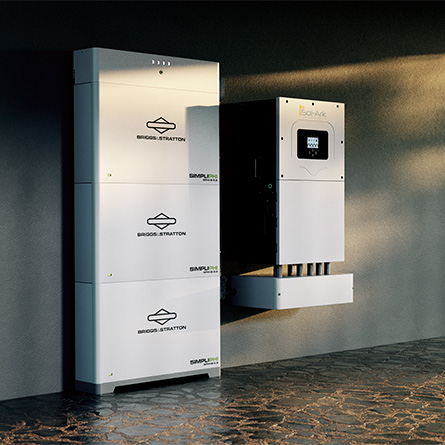In April 2023, California experienced a significant shift in its approach to solar energy compensation when the California Public Utilities Commission (CPUC) introduced NEM (Net Energy Metering) 3.0. This new tariff replaced its predecessor, NEM 2.0, marking a pivotal change in the state's renewable energy landscape. California, known for its progressive energy policies, has again set a precedent influencing solar energy policies nationwide.
The significant change in NEM 3.0
One of the most notable changes under NEM 3.0 is that it necessitates using Battery Energy Storage Systems (BESS) to generate value for electricity customers who choose not to install battery storage alongside their solar panels. This marks a departure from NEM 2.0, where many homeowners found substantial value in installing solar panels and selling that energy back to the grid. Under NEM 3.0, the financial incentives have been restructured to encourage battery storage installation. This change reflects a growing recognition of the importance of battery storage in enhancing the efficiency and reliability of renewable energy systems. The shift resulted from an abundance of solar being sold back to the grid when energy wasn’t in high demand at higher-than-average rates. Emphasizing battery storage in incentives like the Self-Generation Incentive Program (SGIP) allows improved distributed energy storage to handle better grid overload, scheduled outages and its impact on human life.

Source: California Energy Commission
Changes in payment and compensation structure
The new compensation structure under NEM 3.0 is designed to optimize energy usage. It encourages users to store energy during off-peak hours and use it during peak demand times, which benefits homeowners in terms of cost savings and aids in the overall stability and efficiency of the electrical grid.
The necessity of battery storage
In light of these compensation changes, the role of battery storage in solar energy systems has become increasingly vital. Under NEM 3.0, integrating battery storage with solar panels has become almost necessary for maximizing benefits. Battery storage enables stored energy to be utilized during times of high grid demand or lower solar generation. By leveraging current incentives and installing battery storage, homeowners can offset NEM 3.0’s reduced compensation rates compared to NEM 2.0 for solar energy by ensuring their energy usage is as efficient as possible.
Impacts and opportunities from NEM 3.0
Since implementing NEM 3.0, the solar industry has experienced many impacts. Some of those impacts reported in 2023 are also opportunities to pivot. Current opportunities lie in refocusing efforts on ESS and extending services to commercial and industrial clients. Additionally, since the 2019 version of Title 24, additional C&I opportunities have arisen from new construction.
Companies more heavily focused on battery storage installations in California, like Haven Powers, have seen growing interest in battery storage. “Since Haven is in the business of home battery storage systems rather than solar panel installation, NEM 3.0 has not impaired business. The underlying trends of power outages and rising utility costs have also driven accelerated interest in backup power systems,” said Vinnie Campo, CEO of Haven Powers.
Below are some of the facts, impacts, and opportunities from NEM 3.0:
Solar and Storage Needs
California requires significantly more solar energy (about 140GW, 3.5 times more) and seven times more energy storage capacity than currently available.
Solar Job Contraction
NEM 3.0 has shifted the solar industry in California, which was projected to lose 17,000 jobs by the end of 2023, a 22% reduction in the state's solar workforce, according to CALSSA. A shift in focus on battery storage installations can recoup some of these jobs by leveraging battery storage incentives and increasing distributed battery storage, optimizing residential and grid stability.
Sales Decline
According to Ohm Analytics, solar sales in California are down between 77% and 85% yearly, and interconnection applications are down 66% and 83%. Solar dealers and installers can refocus on this part of the market and deliver by pairing solar with battery storage and leveraging current incentives.
ESS incentivized
Since the CPUC has increased incentives to pair solar with battery storage, leveraging these incentives and promoting the benefits of battery storage is the biggest opportunity in the California market.

CALSSA suggestions for improving net metering in California
CALSSA suggests rejecting proposals that increase solar costs for working and middle-class families and cutting red tape for utility connections to revive the solar industry. CALSSA criticizes CPUC's decision, arguing that it has led to the largest loss of clean energy jobs in the nation, driven businesses out of state or into bankruptcy and hindered California's clean energy progress.
In response to these challenges, CALSSA outlined key requests for policymakers
- Launch a "Million Solar Batteries Initiative" to make battery technology more affordable, drawing inspiration from the Schwarzenegger Administration's "Million Solar Homes Initiative."
- Reduce bureaucratic hurdles, including interconnection delays and permitting complexities
Beyond net metering
Beyond net metering incentives, battery storage is a long-term solution for residential, commercial and industrial facilities. Distributed battery systems tied to the grid can also help stabilize it. Ultimately, securing energy management control with a battery storage system is an excellent stabilizer for a small home on a microgrid. The new world that leverages solar power only gets the most value when battery storage is tied to it. The key strategy is leveraging today’s incentives for tomorrow’s energy security.
Briggs & Stratton Energy Solutions supports California’s battery storage journey. As a California manufacturer, SGIP provides an additional 20% savings on qualifying distributed energy systems manufactured in California and installed on the customer side of the utility meter. SGIP-approved Briggs & Stratton Energy Solutions battery storage products include:
AccESS™ with Schneider Electric® inverter
*Qualifies for 20% additional SGIP incentive
**Qualifies for IRS US Content subsidy
The 20% savings are in addition to other rebate incentives available through SGIP. Coupled with the 30% federal tax credit for installing solar and battery storage systems, these combined incentives cover most of the cost of a homeowner or business owner's energy storage equipment.

Ready to experience true energy independence?
Request a consultation with a Briggs & Stratton dealer or installer near you by clicking the button below.



